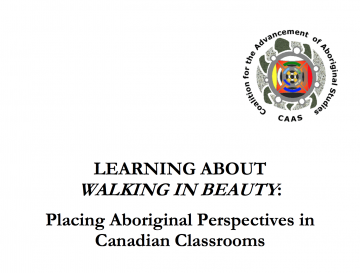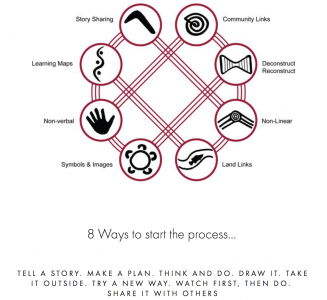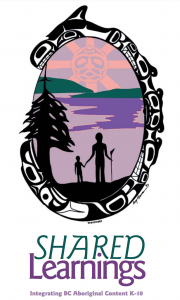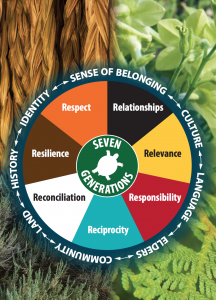To decolonize learning and Indigenize teaching, the curriculum requires much more than adding Indigenous content. Since the imposition of the western education system in Turtle Island, we have mostly learned and prioritize settler ways of thinking. To decolonize and Indigenize the curriculum that is being taught, it requires us to bring Indigenous ways of thinking, being, and learning into course design. This week we feature digital resources that will help us take action to integrate Indigenous worldviews into curriculum development and how these can be interwoven in curriculum design and our classrooms.

 It’s Our Time: First Nations Education Tool Kit: Teachers Guide (National and Manitoba)
It’s Our Time: First Nations Education Tool Kit: Teachers Guide (National and Manitoba)
The Assembly of First Nations (AFN) developed the It’s Our Time: First Nations Education Tool Kit Teacher’s Guide to promote and enhance First Nations student success by preparing and collecting relevant resources for schools, teachers, facilitators, and other community stakeholders. The resource will also help to increase understanding of First Nations history and culture among Indigenous and non-Indigenous peoples by providing relevant tools and resources. The school-based aspects of the resource complement both First Nations and provincial curricula, and offer a teacher-friendly resource that can be used in creative and flexible ways.
Learning about Walking in Beauty: Placing Aboriginal Perspectives in Canadian Classrooms.
A report prepared by the Coalition for the Advancement of Aboriginal Studies (CAAS) for the Canadian Race Relations Foundation (CRRF) combines findings from a 2000-2001 survey of Aboriginal and non-Aboriginal young adults with pedagogical, social and historical analyses. It offers a pedagogical framework and proposals for Canadian formal school curricula that presents Aboriginal studies for all Canadian students. “Walking in Beauty” is a term that speaks of conducting oneself in harmony with all the living world, and is respectfully borrowed from the Navajo People. This report also asserts that curricula will not only helps address the multi-generational cultural repression arising from official policies but also that Aboriginal perspectives integrated across the curriculum from the earliest grades to high school will begin to address the causes of racism in Canadian society.
A set of professional learning guides that are a result of a collaboration between BCcampus, the Ministry of Advanced
Education, Skills and Training, and a Steering Committee of Indigenous education leaders. The content in these guides is authored by teams of Indigenous and ally writers from across B.C. The guides are living resources that can be adapted and localized, offering instruction and best practices that the post-secondary institutions of B.C. can use to Indigenize their institutions. The resources are intended to augment the existing training currently offered through the institutions, recognizing that place-based Indigenous knowledges, languages, and practices are reflected in the localized delivery of Indigenized learning resources.
100 ways to Indigenize and decolonize academic programs and courses by Dr. Shauneen Pete
A pragmatic article by Dr. Shauneen Pete from Little Pine First Nation teaches 100 ways to Indigenize and decolonize academic programs and courses. Indigenization is understood as “The transformation of the existing academy by including Indigenous knowledges, voices, critiques, scholars, students and materials as well as the establishment of physical and epistemic spaces that facilitate the ethical stewardship of a plurality of Indigenous knowledges and practices so thoroughly as to constitute an essential element of the university. It is not limited to Indigenous people, but encompasses all students and faculty, for the benefit of our academic integrity and our social viability” (Indigenous Advisory Circle, University of Regina).
In the following video, listen to Dr. Shauneen Pete teach what do Decolonization and Indigenization look like in the Classroom.
Teachers can incorporate Indigenous pedagogy into the classroom with the 8 ways framework. A research project conducted by Tyson Yunkaporta (2007-2009) developed this 8 Aboriginal Ways of Learning framework. It argues that there are 8 interconnected pedagogies that allow teachers to engage with Aboriginal learning processes while finding a common ground between Indigenous and mainstream pedagogies. This framework addresses the issue of how teachers can use Indigenous pedagogy authentically and productively in the classroom. A framework designed and maintained by the Western New South Wales Regional Aboriginal Education Team and James Cook University in Australia. It is a pedagogical framework for teachers to be able to teach Aboriginal students in a meaningful way.
Full Circle: First Nations, Métis and Inuit Ways of Knowing – A Common Threads Resource
Full Circle: First Nations, Métis and Inuit Ways of Knowing is the fifth in a series of Common Threads classroom resources produced by and for Ontario Secondary School Teachers’ Federation (OSSTF/FEESO) members. Each project in the series tackles an important social issue that is cross-curricular in nature and compels students to examine their beliefs, choices and actions. This project addresses a current shortage of curricular materials that focus on First Nations, Métis and Inuit people, history and culture.
Although many of these lessons can be used by teachers of Native Studies and Native Languages, they were developed for use by teachers of history, civics, social sciences, careers, English and science. All provincial curriculum documents include a statement about the importance of using learning resources that are inclusive of and sensitive to diverse cultures, including Aboriginal people. These lessons will assist educators in achieving this goal.
Shared Learnings: Integrating BC Aboriginal Content K-10
Shared Learnings: Integrating BC Aboriginal Content K-10 focuses on the diversity, depth, and integrity of the cultures of British Columbia Aboriginal peoples. It is a guide for teachers, developed in recognition of the need for classroom materials that can help all teachers provide students with knowledge of, and opportunities to share experiences with, BC Aboriginal peoples. Integration of authentic Aboriginal content into the British Columbia K-10 curriculum with the support of Aboriginal peoples will help to promote understanding of BC Aboriginal peoples among all students.
A curriculum that focuses on Aboriginal content can lead to enlightened discussion of Aboriginal issues and give Aboriginal students a sense of place and belonging in the public school system. To help teachers bring this knowledge into the classroom in a way that is accurate, and that reflects the Aboriginal concept of teaching and learning, Shared Learnings: Integrating BC Aboriginal Content K-10 has been written and designed to include the support and participation of Aboriginal teachers, Elders, and other knowledgeable members of each school or district’s local Aboriginal community(ies).
The Aboriginal Lens- Education for Reconciliation – BCTF
The Aboriginal Lens is a guide for those who work in education and are committed to taking up the “Calls to Action on Education” as stipulated by the Truth and Reconciliation Commission. This framework is designed to help educators challenge the current, established systems of belief that support Eurocentric practices that have silenced other ways of knowing and being. The lens focuses our efforts and can be used to examine and assess policies and practices. The framework also works to address the needs of the collective and the community, as well as providing a common reference for teachers.




